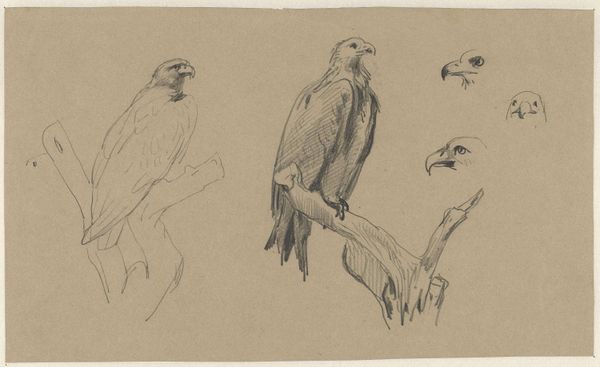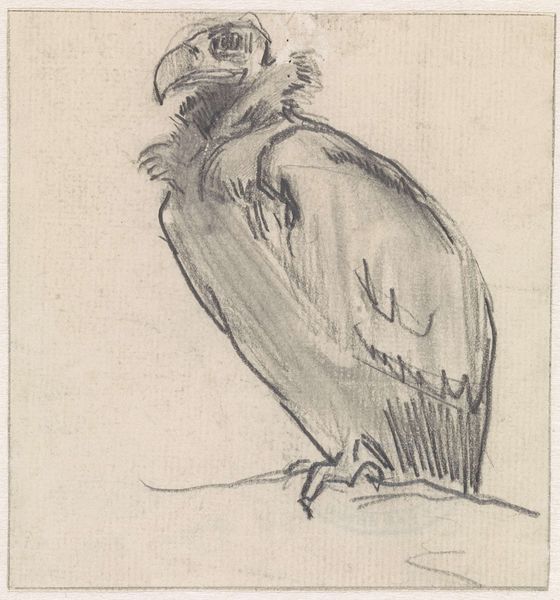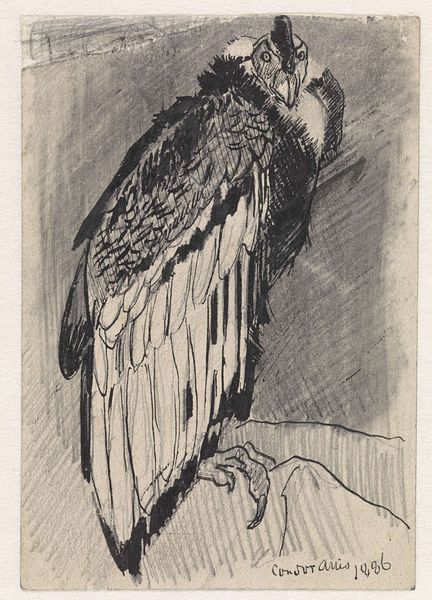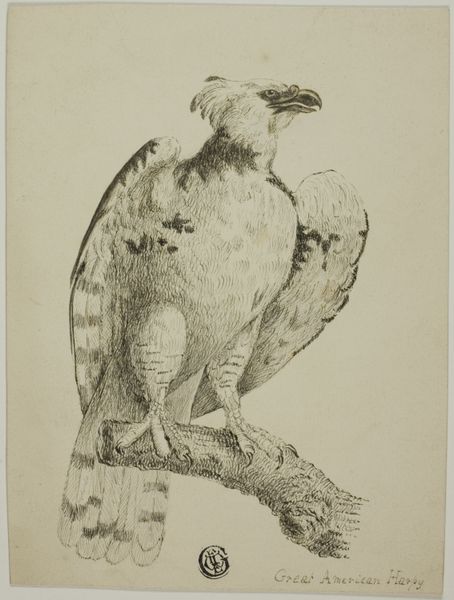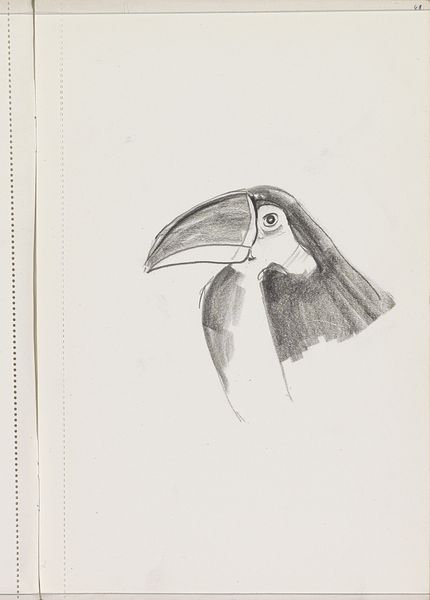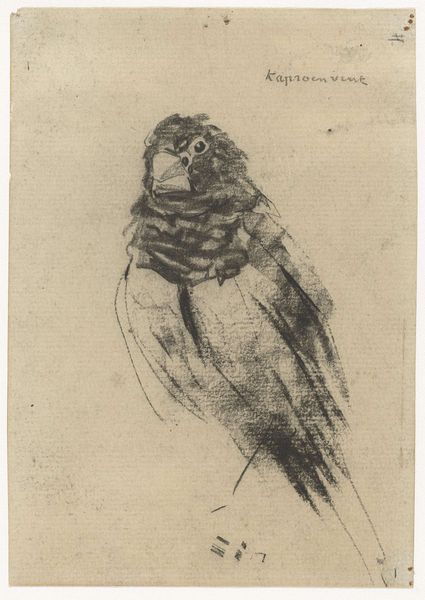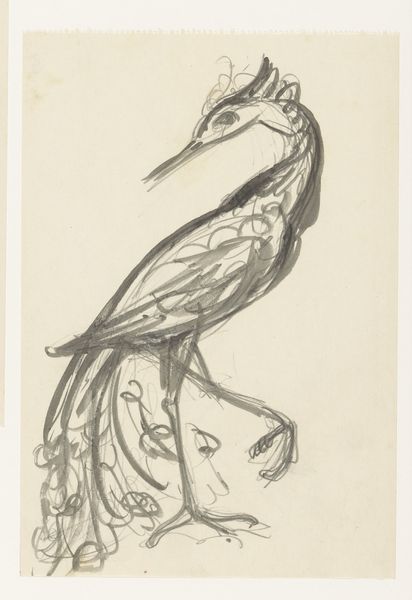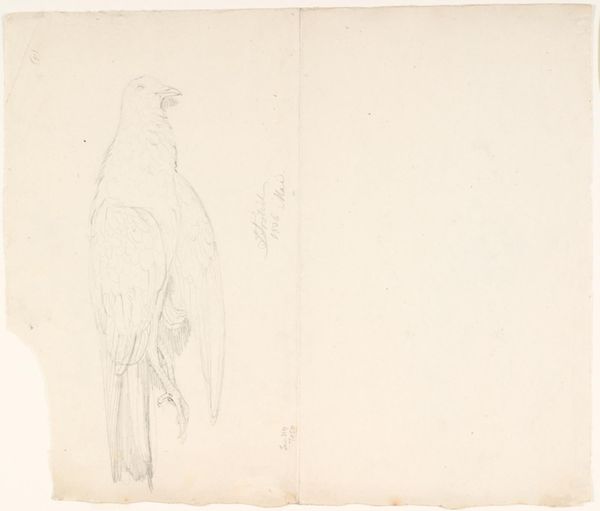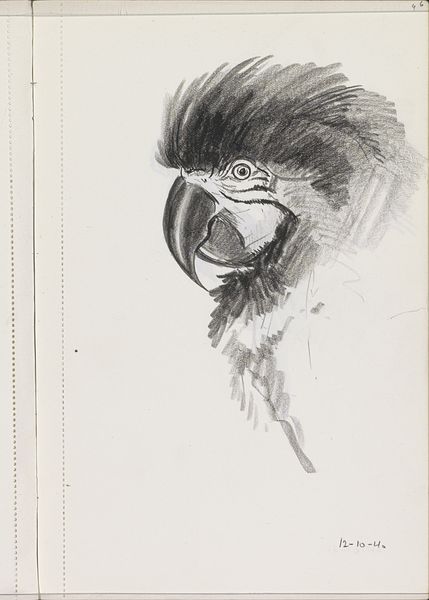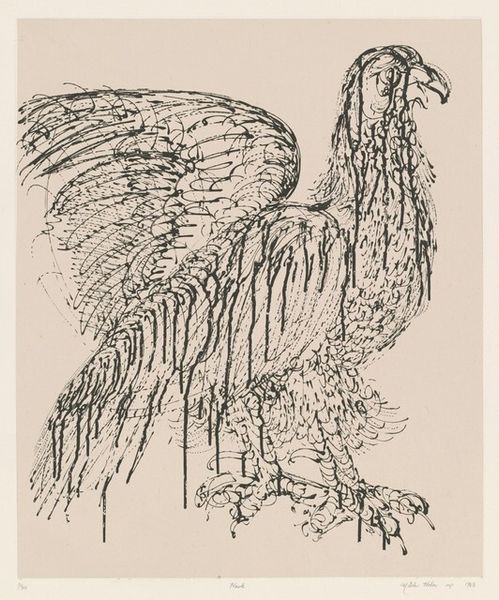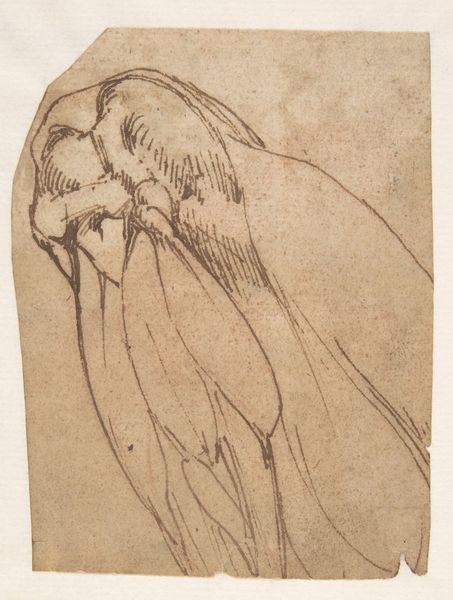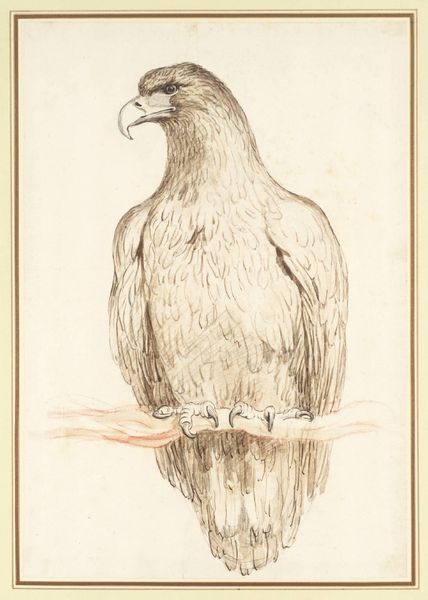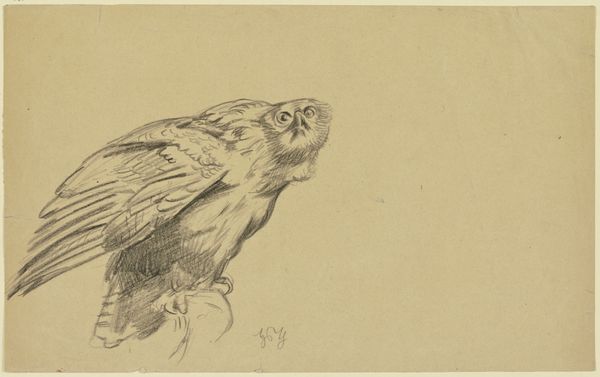
drawing, pencil
#
portrait
#
drawing
#
amateur sketch
#
imaginative character sketch
#
light pencil work
#
animal
#
pencil sketch
#
personal sketchbook
#
idea generation sketch
#
ink drawing experimentation
#
pencil
#
sketchbook drawing
#
portrait drawing
#
sketchbook art
#
realism
Dimensions: height 154 mm, width 110 mm
Copyright: Rijks Museum: Open Domain
Editor: We’re looking at "Kraaggier", a pencil drawing from between 1821 and 1891, by Guillaume Anne van der Brugghen. It seems to be a quick study of a vulture. I’m struck by its direct gaze and the way the sketch captures its powerful presence. What catches your eye? Curator: What intrigues me is what a vulture represents historically and culturally. In many societies, they’re seen as scavengers, associated with death and decay, performing this very important public health role. Think about their portrayal in art – are they vilified, or do we see a certain respect for their role in the cycle of life and death? Editor: That's a darker way of thinking about it, but what would be some examples where this is at play? Curator: Consider ancient Egyptian art. Vultures were associated with goddesses like Nekhbet, a protector of Upper Egypt and childbirth. This depiction elevated the animal, celebrating it and weaving the bird into the narrative of protection. Do you notice any symbols or indicators suggesting a similar purpose in van der Brugghen’s work? Or does the lack of setting affect this symbolic aspect of vultures? Editor: I see your point. In this sketch, without a clear context, the vulture comes across almost like a noble portrait, a dignified creature observed directly. I suppose how we view vultures depends so much on what the artist—and, ultimately, the audience—bring to the work. Curator: Exactly! And that's shaped by so much cultural context around us, including even just knowledge and education around ecosystems, where an image of a vulture takes on new contemporary roles.
Comments
No comments
Be the first to comment and join the conversation on the ultimate creative platform.
